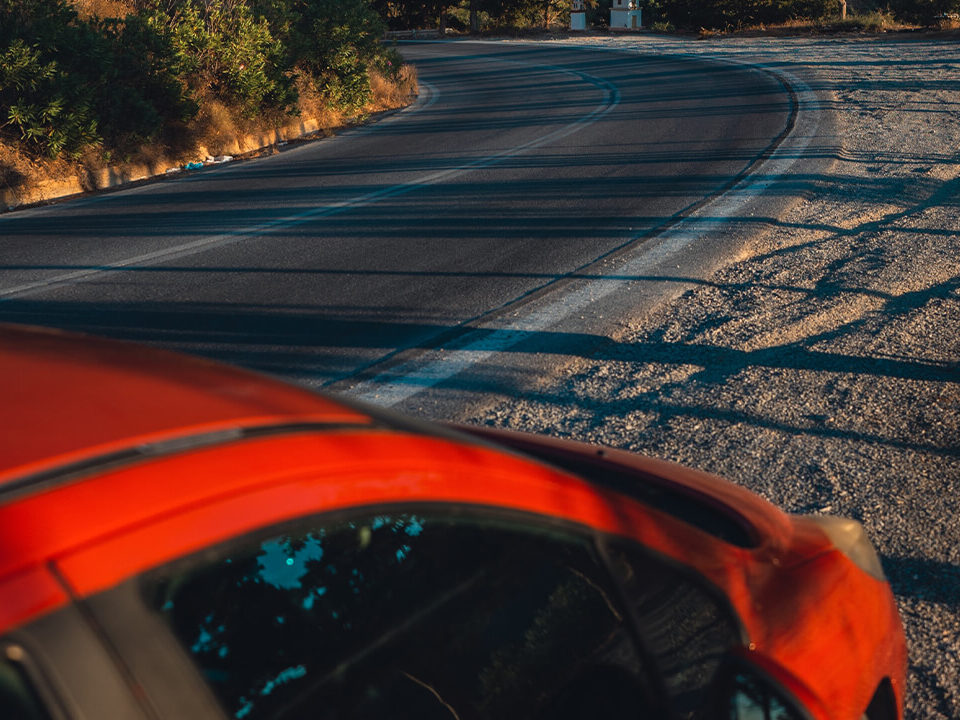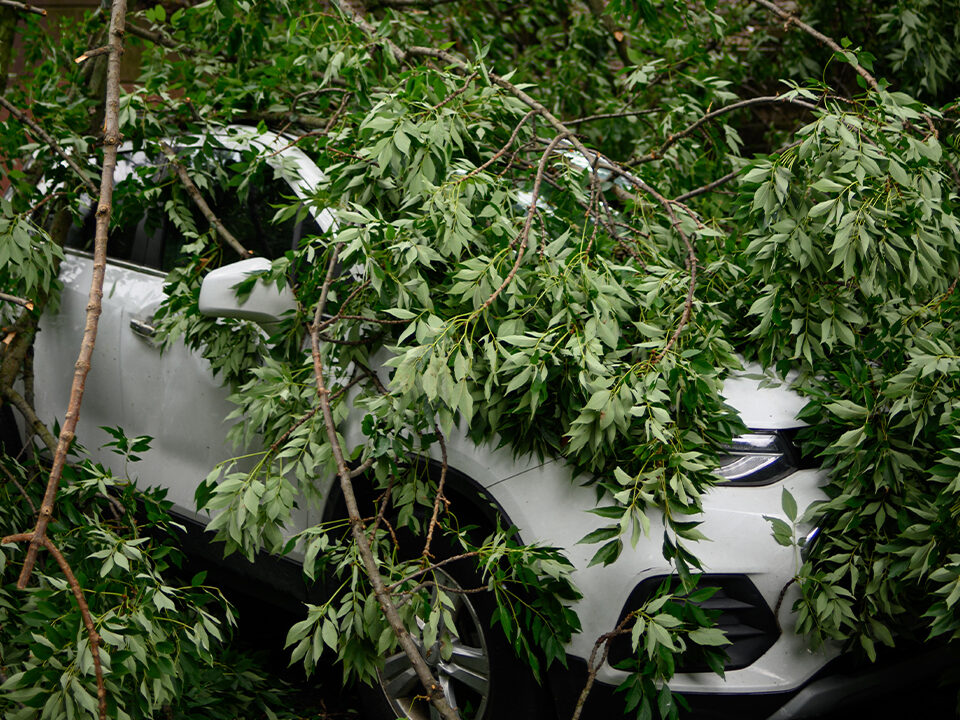- Quality workmanship and service excellence
- 0151011415
- info@kiwisautobody.co.za
Rear-end damage repairs

Protect your car from hail damage
September 13, 2022
Why you should avoid cheap panel beaters
November 22, 2022Home » Car Repair » Rear-end damage repairs
What you need to know
Have you ever been rear-ended? Here’s everything you need to know about repairing rear-end damages from Polokwane’s leading auto-body shop:
Rear-end accidents are the most common types of collisions to occur on the roads that range in severity from passenger to driver injuries and damages caused to the vehicles. With thousands of vehicles on the road today, accidents do unfortunately happen and are common because of distracted drivers.
Distractions include texting, talking on the phone, eating, or interacting with passengers. Distracted drivers may not always have enough time to slow down or stop their vehicle and avoid an accident. In addition to distracted driving, other factors may lead to rear-end collisions, which include:
Speeding - Heavy traffic - Reckless driving - Road rage - Mechanical problems or failure - Driver fatigue - Driving under the influence
If you have been involved in an accident, it is important to have your vehicle inspected and repaired by a mechanical technician. The shock of a rear-end accident can damage your car, making it unsafe to drive until it's repaired. If the accident's impact didn't leave any visible marks, it could still cause damage underneath, known as hidden damage that will make your vehicle perform poorly.
If your vehicle isn't inspected properly after an accident, you could experience performance problems that will damage your car further and put you and others at risk of danger. However, the smallest collisions can cause serious rear-end damages and is difficult to judge at first glance.
Even the smallest dent can hide damages that may put your safety at risk. Learning about the types of rear-end damage can help you identify problems before they become worse and repair them. Keep reading for more information about rear-end damages, the problems that can occur and what to do if it happens to you.
5 Types of rear-end damages
Being involved in a rear-end collision may cause internal damages that are difficult to detect by the untrained eye.
Even though your vehicle appears to be in good condition, there may be other hidden problems underneath the surface that will lead to bigger problems as time goes by.
Here are the five types of damages that are likely to occur to a vehicle after a rear-end collision.
1. Alignment damages
Alignment damage is a misalignment of the wheels and suspension of a vehicle, causing it to pull to one side of the road whilst you're driving. If you notice any vibrations, noisy steering, uneven tire wear, a crooked steering wheel or squealing tires, it can be a sign of an alignment issue.
Even though a vehicle's alignment is slightly off, it can stress the brakes, tires, suspension, and other parts of the vehicle, which causes a serious safety threat and increases the chances of another accident occurring.
2. Engine damages
A rear-end collision can damage your vehicle's engine, transmission, and exhaust system. The force of impact can move the exhaust system forward, damaging the catalytic converter, exhaust manifold, muffler, engine mounts and the "Y" pipe that runs to your engine. Additionally, the rear-wheel-drive (RWD) and all-wheel-drive (AWD) vehicles have transmission components near the car's rear that can be damaged in an accident.
Signs that your transmission is damaged include a car leaking transmission fluid or issues with acceleration and shifting. If you notice the "check engine" light flashing after being involved in an accident, get your vehicle inspected immediately by a mechanical technician.
3. Suspension damages
The suspension system is an important aspect of a vehicle's performance. It keeps the car in control, maximises the friction between the tires and the road and allows the driver to steer and handle the vehicle smoothly. Collisions involving the rear end often result in frame damage, which can stress the vehicle's suspension system and cause the parts, such as the shocks and struts, to wear out faster.
Additionally, poor alignment can also put more pressure on suspension components. If your vehicle has a bad suspension, it can lead to a rough ride making it difficult to control your vehicle and risk your safety. If left in this state, it will only worsen and compromise your safety further, as well as decrease the value of your vehicle.
4. Electrical problems
Vehicles have become more complicated and are technically more advanced than before. Even the smallest collision can cause the wires to loosen in your taillights, brake lights, and battery. Each of these parts is essential to staying safe while driving.
Hence, it's important to ensure that these parts are always intact, especially after an accident. During an inspection of your car's electrical components, a technician may find that repairs are needed.
5. Boot damage
It's easy to overlook boot damage because it doesn't affect the ability to drive a vehicle, but it should never be ignored. It can be a safety hazard if you drive with a damaged boot because it can pop open and block your rear-view mirror and may startle the driver behind you, which may lead to another rear-end collision.
Even though it may seem like a low risk, it's always wise to have any sort of boot damage repaired, which should open and close with ease and securely locked.

6 Steps to follow from a rear-end collision
It's important to know what to do when involved in an accident and to follow specific steps to ensure that you are protected financially and legally. Here we have listed six steps to follow after being rear-ended:
Step 1: A walk-around inspection
This step involves walking around your vehicle to inspect for any damage, keeping in mind that some may not be obvious initially. Inspecting your vehicle can help you by giving an overview of the damages you'll be dealing with, but it's best to take it to a professional at an auto body shop, such as Kiwis Auto Body, to look over your vehicle and provide a detailed action plan to restore it.
Step 2: Look for any injuries
Before you get out of your vehicle after a rear-end collision, check yourself and your passengers for any sign of injury. Commonly, people tend to feel shaken up after an accident, especially when airbags deploy, so give yourself and your passengers a minute to breathe. Then double-check if anyone has been injured and check up on the other driver too.
Any bodily injuries should be treated by a doctor as soon as possible or reported to the health department.
Step 3: Move away from traffic flow
When it's safe, try to move your vehicle to the side of the road away from any traffic flow and keep in mind to have your hazard lights on to warn ongoing traffic. If you can't move your vehicle, move yourself and any passengers to safety before speaking to the involved parties.
Step 4: Notify police and insurance providers
After being rear-ended, the first thing to do is to call the police and your insurance provider, even if it's a minor accident, as to have it on record of what occurred. The investigating officer will document the scene and file a report. Your insurance provider will require you to provide certain documents, such as the time and date of the accident, the parties involved, and your contact information.
Step 5: Gather proof
If possible, take photos of the accident and any damages to the other drivers and your vehicle. Look for dents, frame or bumper damage, boot damage, alignment damage, and transmission or electrical damage to provide it to your insurance company if needed.
Step 6: Exchange information
It is best for you to have all the needed information from all involved parties and witnesses. Here's the information you need:
- Full names of all involved parties and witnesses
- Physical addresses
- conntact details
- Insurance provider and policy numbers of involved drivers and passengers
- Driver's license information of the involved driver
- License plate numbers of involved vehicles
- Make, model and colour of vehicles
- Date, time, and location of the accident
Rear-end damage repairing process
Every vehicle is different, but our panel beating process always stays the same. We thoroughly inspect your car's hidden and visible damages. The panel beating process for rear-end damages includes assessing for unseen damage, checking for structural damages, repairing, or replacing any accident-related damage, and preparing parts for spray painting and fitting.
Once the repairing process is complete, we proceed to contact the customer for vehicle pickup.
Having your vehicle inspected and repaired by a professional is vitally important, especially when it comes to your safety. A rear-end collision can severely damage your vehicle, putting the lives of you and others at risk.

With 23 years in the industry, we pride ourselves on customer satisfaction, diligence, and professionalism in everything we do. Kiwis Auto Body is a name you can trust to have your vehicle back to its original state and return to the road quickly and efficiently. If you need rear-end or accident-related repairs, you can give us a call today or request a free quote from our website.




